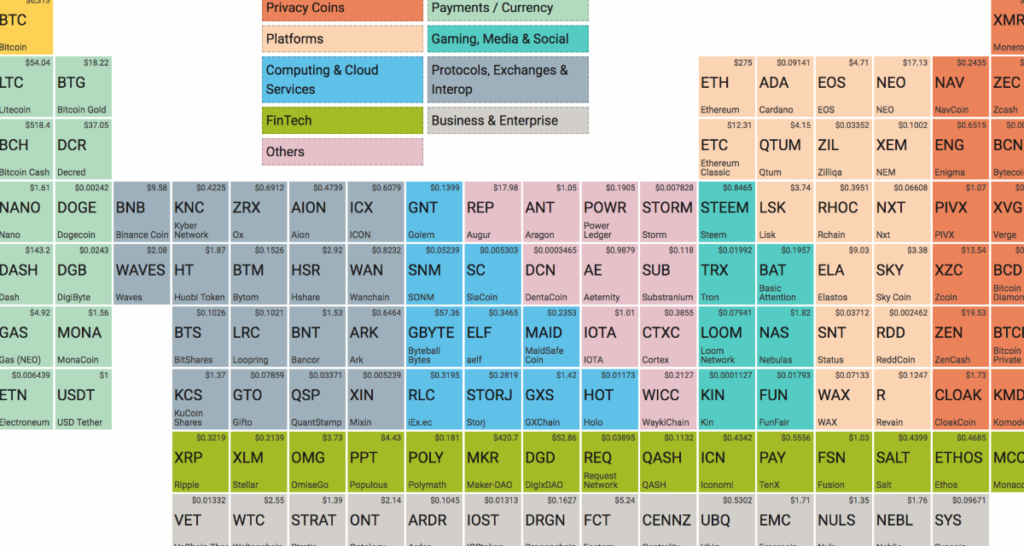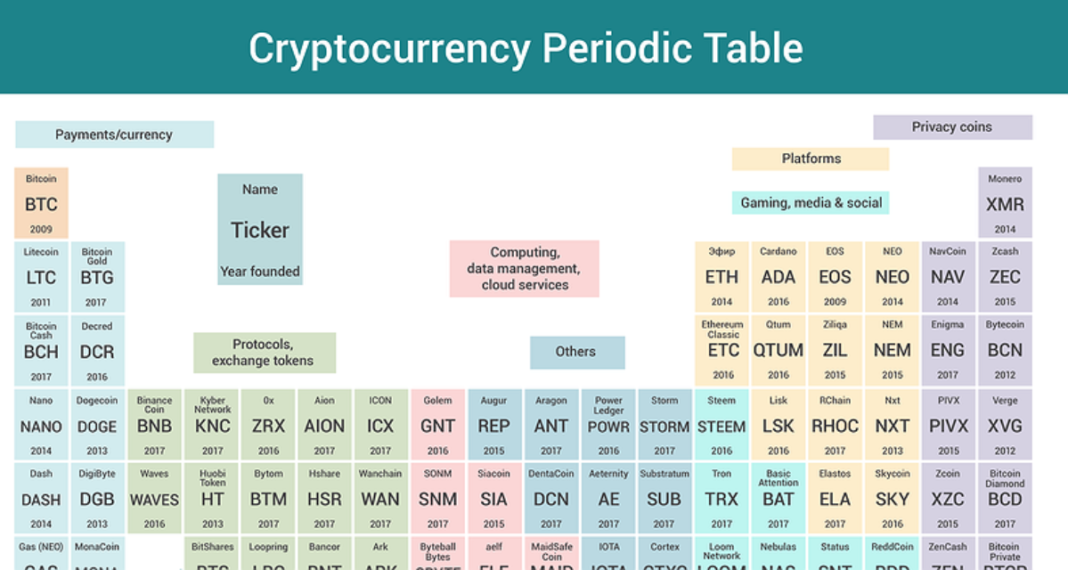Coin Periodic Table: Unveiling the Secrets of Value
Coins, like elements in the periodic table, possess distinct properties and characteristics that determine their worth. By understanding the factors that influence coin value, collectors and enthusiasts can navigate the intricate realm of numismatics with confidence and expertise. Let’s dive into the various elements of the coin periodic table and explore their significance in determining coin value.
1. Rarity: The Precious Element of Coin Value
Rarity plays a pivotal role in determining the value of a coin. Just as certain elements on the periodic table are scarce and highly sought after, coins with limited mintages or surviving specimens command a premium in the numismatic market. Rarity is often influenced by factors such as historical events, production errors, or even the passage of time. Coins with low mintage figures or those that have been lost to history become coveted treasures for collectors.
2. Metal Content: The Foundation of Value
Similar to the elemental composition of substances in the periodic table, the metal content of a coin forms the foundation of its intrinsic value. Precious metals such as gold, silver, and platinum have been widely used in coinage throughout history due to their durability and inherent value. The purity and weight of these metals contribute significantly to the market value of coins. For instance, a gold coin will have a higher value than a similar-sized coin made of a less valuable metal.
3. Historical Significance: Unearthing the Past
Just as some elements in the periodic table hold historical importance, certain coins carry immense historical significance. Coins that were minted during pivotal moments in history or depict influential figures can capture the attention of collectors. These numismatic artifacts provide a tangible link to the past and hold a unique allure for both history enthusiasts and coin collectors alike.
4. Condition: The State of Preservation
In the coin collecting world, the condition of a coin is of utmost importance. Coins in exceptional condition, often referred to as “mint state,” hold a higher value than those with wear or damage. Similar to the periodic table, where elements can undergo oxidation or decay, coins can deteriorate over time due to mishandling, exposure to the elements, or improper storage. The higher the grade or condition of a coin, the more desirable it becomes among collectors.
5. Scarcity: A Rare Find
Scarcity, closely related to rarity, is another crucial element in determining the value of a coin. While rarity refers to the absolute number of coins available, scarcity considers the relative availability of a particular coin in relation to the demand. Some coins may have high mintage figures but are rarely encountered in high grades or pristine condition, making them scarce and highly sought after.
6. Demand: The Driving Force
Demand is a key factor that influences the value of coins, just as it affects the market value of elements in the periodic table. Popular coin series, commemorative issues, or coins associated with iconic themes tend to generate significant demand among collectors and enthusiasts. The interplay between supply and demand dynamics can lead to price fluctuations and increased value for coins in high demand.
7. Design and Aesthetics: The Visual Appeal
The design and aesthetics of a coin contribute to its overall desirability and value. Just as elements in the periodic table possess distinct properties, coins feature intricate artwork, engravings, and motifs that showcase the talent and craftsmanship of the minting process. Coins with visually striking designs or artistic appeal often captivate collectors, making them highly sought after in the numismatic community.
8. Cultural Significance: A Window into Culture
Coins serve as artifacts that reflect the culture and heritage of a particular time and place. Like elements on the periodic table, coins can provide valuable insights into the history, traditions, and beliefs of a society. Coins featuring iconic symbols, landmarks, or cultural motifs hold immense value beyond their metallic worth, attracting collectors with a penchant for cultural exploration.
9. Popularity and Collector Interest: A Numismatic Community
The strength and size of the numismatic community play a role in determining the value of coins. Just as certain elements in the periodic table gain popularity and recognition, coins that have a dedicated collector base or are part of a popular series often command higher prices. The shared enthusiasm and competition among collectors drive the value of coins, as individuals strive to complete their collections or acquire rare specimens.
10. Grading and Authentication: Establishing Trust
Grading and authentication services provide an objective assessment of a coin’s condition, authenticity, and quality. Similar to the standardized measurements and classifications used in the periodic table, coin grading systems establish a common language for collectors, investors, and dealers. Third-party grading services, such as the Professional Coin Grading Service (PCGS) or the Numismatic Guaranty Corporation (NGC), assign grades to coins, ensuring transparency, trust, and accuracy in the market.
11. Market Conditions: The Economic Factor
The coin market, like the broader financial landscape, is subject to economic conditions and trends. Factors such as inflation, interest rates, and investor sentiment can impact the value of coins. Just as elements in the periodic table can experience fluctuations in demand and price, the value of coins can be influenced by economic forces. Staying informed about market conditions and trends is essential for collectors and investors.
12. Rarity versus Demand: Striking the Balance
The delicate balance between rarity and demand greatly influences the value of coins. Rarity alone does not guarantee high value if there is limited interest or demand for a particular coin. Conversely, a coin with high demand and popularity may maintain its value despite a higher mintage figure. The equilibrium between rarity and demand creates a fascinating dynamic in the world of coin collecting.
13. Coin Grading Scale: Decoding the Grades
Understanding the coin grading scale is crucial for collectors and investors to assess a coin’s condition accurately. The grading scale assigns a numeric grade or descriptive terms to coins, indicating their level of preservation and wear. Common grading scales include the Sheldon Scale, the Universal Rarity Scale (URS), and the adjectival scale. Familiarizing oneself with these grading systems enables collectors to make informed decisions and accurately determine a coin’s value.

14. Coin Preservation: Safeguarding Your Collection
Proper coin preservation techniques are vital to maintain the long-term value and condition of a collection. Similar to elements on the periodic table that require specific storage conditions, coins should be stored in suitable holders or albums that protect them from environmental factors. Coin holders, archival sleeves, and acid-free storage materials can help prevent damage and ensure the longevity of your numismatic treasures.
15. Coin Authentication: Ensuring Authenticity
Authenticity is of utmost importance in the world of coin collecting. Like elements in the periodic table, coins can be subject to counterfeiting or alteration. To establish the authenticity of a coin, experts employ various methods such as examining its weight, dimensions, metallic composition, and conducting in-depth research. Seeking the expertise of reputable coin dealers or professional authentication services is crucial when acquiring valuable or rare coins.
16. Popular Coin Series: Exploring Iconic Collections
Certain coin series have garnered significant attention and popularity among collectors. These series often feature consistent designs, themes, or commemorative issues that span multiple years. Exploring popular coin series, such as the American Silver Eagle, the British Sovereign, or the Canadian Maple Leaf, provides collectors with a diverse range of options and the opportunity to assemble a comprehensive and highly sought-after collection.
17. Coin Types: From Bullion to Commemoratives
Coins come in various types, each with its unique characteristics and purposes. Bullion coins, such as the American Gold Buffalo or the South African Krugerrand, are primarily valued for their precious metal content. On the other hand, commemorative coins, like the United States Mint’s State Quarters program, are minted to commemorate special events or honor significant individuals. Exploring the different coin types expands the possibilities for collectors to curate a diverse and captivating collection.
18. Coin Investing: Potential Returns and Risks
Coins have gained recognition as an investment asset class, offering potential returns and diversification opportunities. Similar to elements in the periodic table that can be considered commodities, certain coins can appreciate in value over time. However, it’s important to note that coin investing carries inherent risks, and thorough research, market knowledge, and consultation with experts are crucial before embarking on a numismatic investment journey.
19. Coin Dealers: Navigating the Market
Navigating the coin market can be challenging, but reputable coin dealers can provide valuable guidance and assistance. Just as elements on the periodic table can have different sources or suppliers, coins are bought and sold through dealers and auction houses. Trusted coin dealers can offer expertise, access to rare specimens, and provide a platform for collectors to expand their collections or acquire specific coins of interest.
20. Coin Collecting Communities: Sharing the Passion
Engaging with coin collecting communities and organizations can enhance your numismatic journey. Joining clubs, attending coin shows, or participating in online forums connects you with like-minded individuals who share your passion for coins. These communities offer opportunities to learn, share knowledge, and expand your network within the numismatic world.
21. Coin Periodic Table: An Overview
The concept of the coin periodic table represents the diverse elements that contribute to the value and appeal of coins. From rarity and metal content to historical significance and design aesthetics, understanding these elements enables collectors and enthusiasts to navigate the complex world of numismatics with confidence and expertise.
Conclusion: The Allure of the Coin Periodic Table
The coin periodic table encompasses the diverse elements that contribute to the value, desirability, and historical significance of coins. From rarity and metal content to condition and design aesthetics, each element plays a crucial role in shaping the numismatic landscape. By understanding and appreciating these elements, collectors and enthusiasts can embark on a captivating journey through the world of coins, uncovering hidden treasures and enriching their understanding of history, culture, and economics.
22. FAQs About the Coin Periodic Table
FAQ 1: How do I determine the value of a coin?
Determining the value of a coin involves considering factors such as rarity, metal content, condition, historical significance, and demand. Consulting coin price guides, market trends, and seeking expert opinions can help in assessing a coin’s value accurately.
FAQ 2: Are all old coins valuable?
Not all old coins are valuable. While age can be a factor, other elements such as rarity, condition, and demand play a significant role in determining a coin’s value. Some old coins may hold sentimental or historical value but may not necessarily have high monetary worth.
FAQ 3: Can I clean my coins to enhance their value?
Cleaning coins is generally discouraged, as improper cleaning methods can damage the surface and diminish their value. Natural toning and patina that develop over time are often desirable among collectors. If you are uncertain about a coin’s cleaning requirements, it is advisable to consult a professional.
FAQ 4: What should I consider when buying coins online?
When buying coins online, it is important to research and choose reputable sellers or platforms with a track record of authenticity and customer satisfaction. Verify the seller’s credentials, review their return policies, and ensure the coins are accurately described and accompanied by clear images.
FAQ 5: How can I protect my coin collection from damage?
To protect your coin collection, store the coins in appropriate holders or albums that provide a barrier against environmental factors such as moisture, air, and light. Handling coins with clean hands, avoiding excessive touching, and storing them in a stable temperature-controlled environment can help preserve their condition.
FAQ 6: Is coin collecting a profitable hobby?
Coin collecting can be a rewarding hobby both intellectually and financially. While some coins can appreciate in value over time, it is important to approach coin collecting with a long-term perspective and a genuine interest in the subject. The financial profitability of coin collecting can vary depending on market conditions and individual investment strategies.


